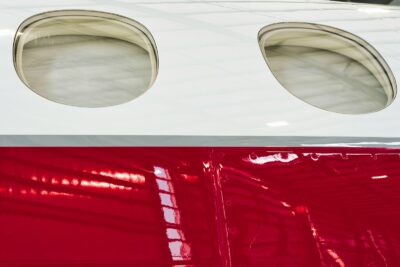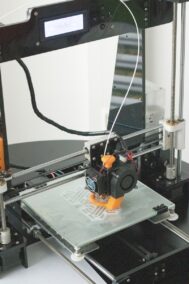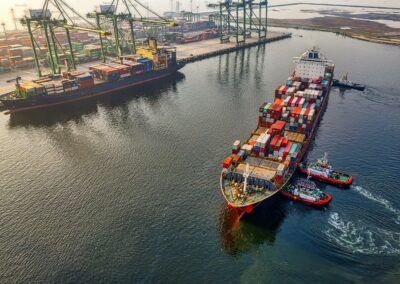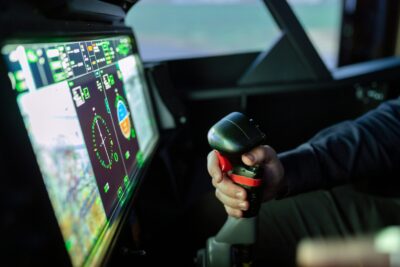Nanotechnology in Flight: Revolutionizing Aerospace
Introduction to Lightweight Nanocomposites
The aerospace industry is experiencing a profound transformation with the adoption of lightweight nanocomposites, heralding a new era of innovation and efficiency. Nanotechnology has revolutionized the way aircraft are designed and manufactured, offering unparalleled opportunities to reduce weight, improve performance, and enhance sustainability. In regions like Saudi Arabia and the UAE, where there is a strong focus on technological advancement and sustainable aviation, the integration of lightweight nanocomposites is driving significant progress in the aerospace sector.
Lightweight nanocomposites are engineered materials that combine nanoscale particles with traditional aerospace materials, such as metals, polymers, and ceramics. These advanced composites offer exceptional strength-to-weight ratios, making them ideal for a wide range of aerospace applications. By incorporating nanocomposites into aircraft structures, manufacturers can achieve substantial weight savings without compromising structural integrity or safety. This, in turn, leads to increased fuel efficiency, reduced emissions, and lower operating costs for airlines, driving economic and environmental benefits across the aviation industry.
Furthermore, lightweight nanocomposites enable innovative design possibilities that were previously unattainable with conventional materials. Engineers can leverage the unique properties of nanomaterials to create complex geometries, optimized for aerodynamics and performance. From fuselage components to wing structures, nanocomposites offer unparalleled flexibility in design, allowing for more efficient and sustainable aircraft configurations. This level of design freedom opens up new opportunities for aircraft manufacturers to push the boundaries of innovation and develop the next generation of aircraft that are lighter, faster, and more fuel-efficient.
The Benefits of Lightweight Nanocomposites
The adoption of lightweight nanocomposites in the aerospace industry offers a multitude of benefits for manufacturers, airlines, and passengers alike. One of the primary advantages is the significant reduction in aircraft weight achieved through the use of advanced materials. By replacing traditional metals with lightweight nanocomposites, aircraft can achieve substantial fuel savings over their operational lifespan. This not only reduces operating costs for airlines but also lowers greenhouse gas emissions, supporting global efforts to combat climate change and reduce the environmental impact of aviation.
In addition to weight reduction, lightweight nanocomposites offer superior mechanical properties that enhance the performance and durability of aircraft components. Nanocomposites exhibit excellent resistance to fatigue, corrosion, and impact damage, ensuring the long-term reliability and safety of aircraft structures. This results in fewer maintenance requirements and lower lifecycle costs for airlines, leading to improved profitability and operational efficiency. Moreover, the lightweight nature of nanocomposites enables aircraft to carry more payload or passengers, further enhancing revenue-generating opportunities for airlines.
Moreover, the use of lightweight nanocomposites promotes technological innovation and economic growth within the aerospace industry. As manufacturers invest in research and development to optimize nanocomposite materials and manufacturing processes, new opportunities emerge for job creation, skills development, and industry collaboration. This fosters a culture of innovation and entrepreneurship, driving continuous improvement and competitiveness in the global aerospace market. By embracing lightweight nanocomposites, stakeholders in Saudi Arabia, the UAE, and beyond are positioning themselves at the forefront of aerospace innovation, shaping the future of flight for generations to come.
Challenges and Future Outlook
Despite the numerous benefits of lightweight nanocomposites, there are challenges that must be addressed to realize their full potential in the aerospace industry. One key challenge is the scalability of nanomanufacturing processes for large-scale production of aircraft components. Manufacturers must invest in advanced manufacturing technologies and infrastructure to overcome these scalability issues and ensure cost-effective production of nanocomposite materials.
Additionally, there are regulatory considerations surrounding the use of nanomaterials in aerospace applications. Regulatory bodies must establish clear guidelines and standards for the testing, certification, and implementation of lightweight nanocomposites in aircraft. This includes addressing concerns related to material safety, environmental impact, and long-term performance. Collaboration between industry stakeholders, government agencies, and research institutions is essential to navigate these regulatory challenges and facilitate the widespread adoption of lightweight nanocomposites in the aerospace sector.
Looking ahead, the future of lightweight nanocomposites in aerospace is promising, with ongoing research and development driving continuous innovation. As the demand for more efficient, sustainable aircraft continues to grow, nanotechnology will play an increasingly important role in shaping the future of flight. In regions like Saudi Arabia and the UAE, where there is a strong commitment to technological advancement and economic diversification, lightweight nanocomposites will be instrumental in driving progress and establishing leadership in the global aerospace market.
Conclusion: Shaping the Future of Flight
The integration of lightweight nanocomposites into the aerospace industry represents a paradigm shift in aircraft design and manufacturing. From weight reduction and fuel efficiency to performance optimization and sustainability, nanotechnology offers a myriad of benefits for the aviation sector. In Saudi Arabia, the UAE, and beyond, stakeholders are embracing these advancements to drive progress and shape the future of flight. With continued investment and collaboration, lightweight nanocomposites will continue to push the boundaries of innovation, making air travel more efficient, sustainable, and accessible for people around the world.
—
#aerospaceindustry #nanotechnology #lightweightmaterials #compositematerials #SaudiArabia #UAE #Riyadh #Dubai #technologicalinnovation #sustainableaviation























